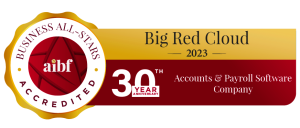Setting up your new clothes shop requires that you must first complete and carry out a long list of tasks. From registering your business name, securing premises, fitting the shop out, hiring employees, negotiating with suppliers, selecting the ePOS system, to the sign over the door. Not forgetting your online accounting software. In fact, the list is endless.
One thing that will preoccupy you, or at least it should, is how to draw customers to and through your front door. Key to this is understanding your unique selling proposition or unique selling point and effectively communicating it to your target market.
Understanding Your USP
A unique selling proposition or unique selling point (USP) is an advertising tactic you use to make your products (services) stand out when there may not be that many differences to other products in your market segment. The USP should be unique to your business so that it will drive more sales which in turn will provide a firm footing for the business. The USP shouldn’t consist of every little business aspect that you believe helps your shop stand out. It should be more customer-centric and focused.
Finding Your USP
So how do you find your unique selling proposition? You can focus on your USP by taking a marketing standpoint. Find out the four traits of your products: price, placement, characteristics, and promotional tactics. Then see what trait is the strongest in regards to your products that your competitors don’t have with their offering.
To further define the USP, use these strategies:
- Ask your customers. Surveys and questionnaires allow you to find out the reasons why they come to your shop. You can ask questions related to the quality of your products, price, customer service and even how organised your shop is providing a good shopper experience.
- Think like a customer. If you just opened up a new startup, then you won’t have enough customers to make any inquiries. In this instance, you have to look at your products and services much in the same way as a potential customer who comes into the shop. What is it that makes your business stand out? What services do you provide that a customer would appreciate?
- Look at the customer’s motives. It’s great that you know your customers’ demographics so you can market to the right target audience. Now you need to understand their motivations. What is the biggest influences to their purchasing decisions? Is your shop at a convenient location? Do they trust your products over the ones they can get from the competition? Do you always have the items in stock that they desire?
Write down a list of all the unique value propositions that you discover. Then assess each one based on market trends and whether the USP is already in use by another company. Once you have shortened down the list, now is the time to decide if you want your company to associate itself with that particular USP.
While customers may appreciate the customer service you provide, you may want to decide on the quality of your products as your USP since it sets you apart more from other shops. Once you decide on your USP, you can implement it into your marketing strategies.




